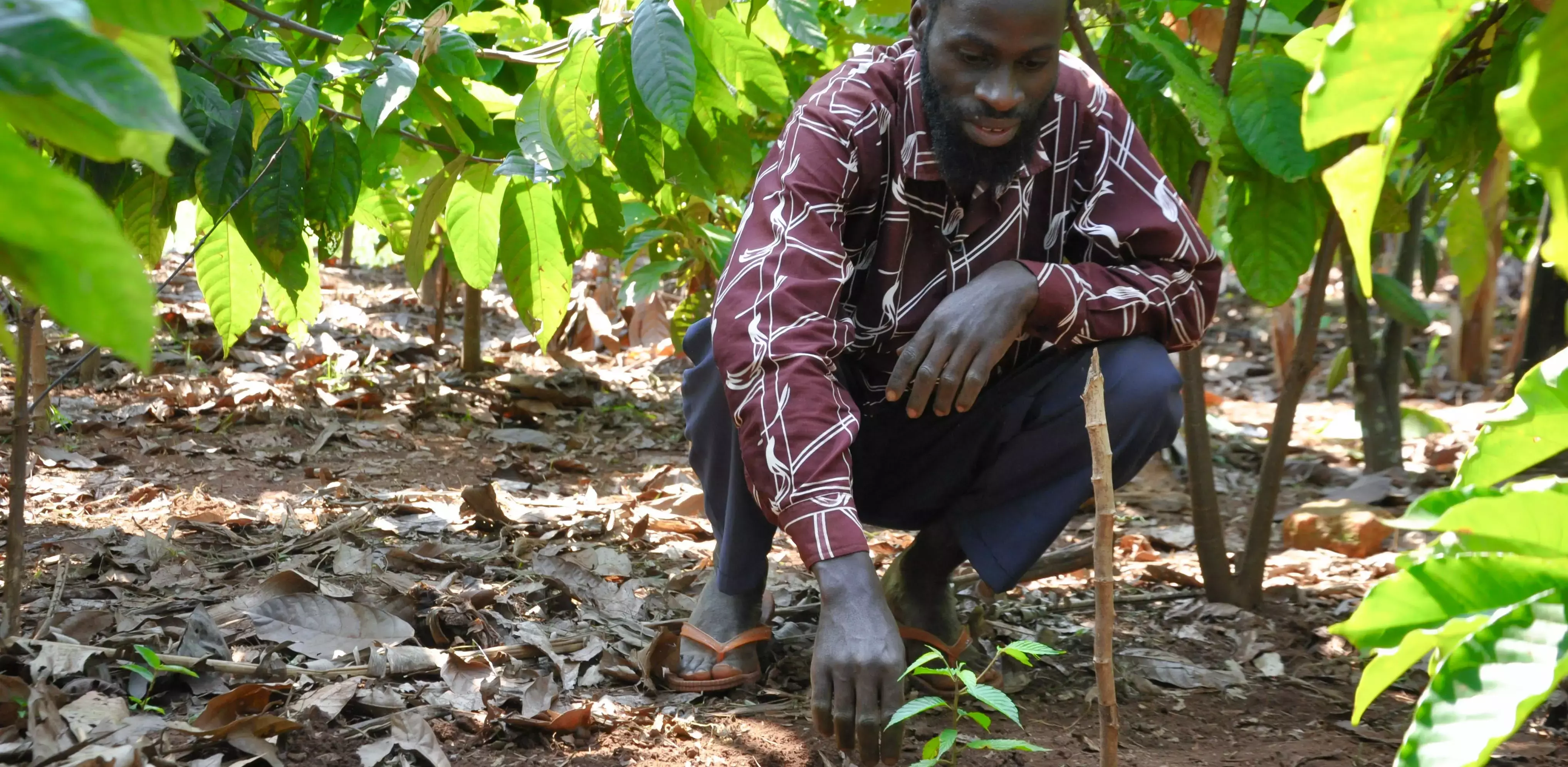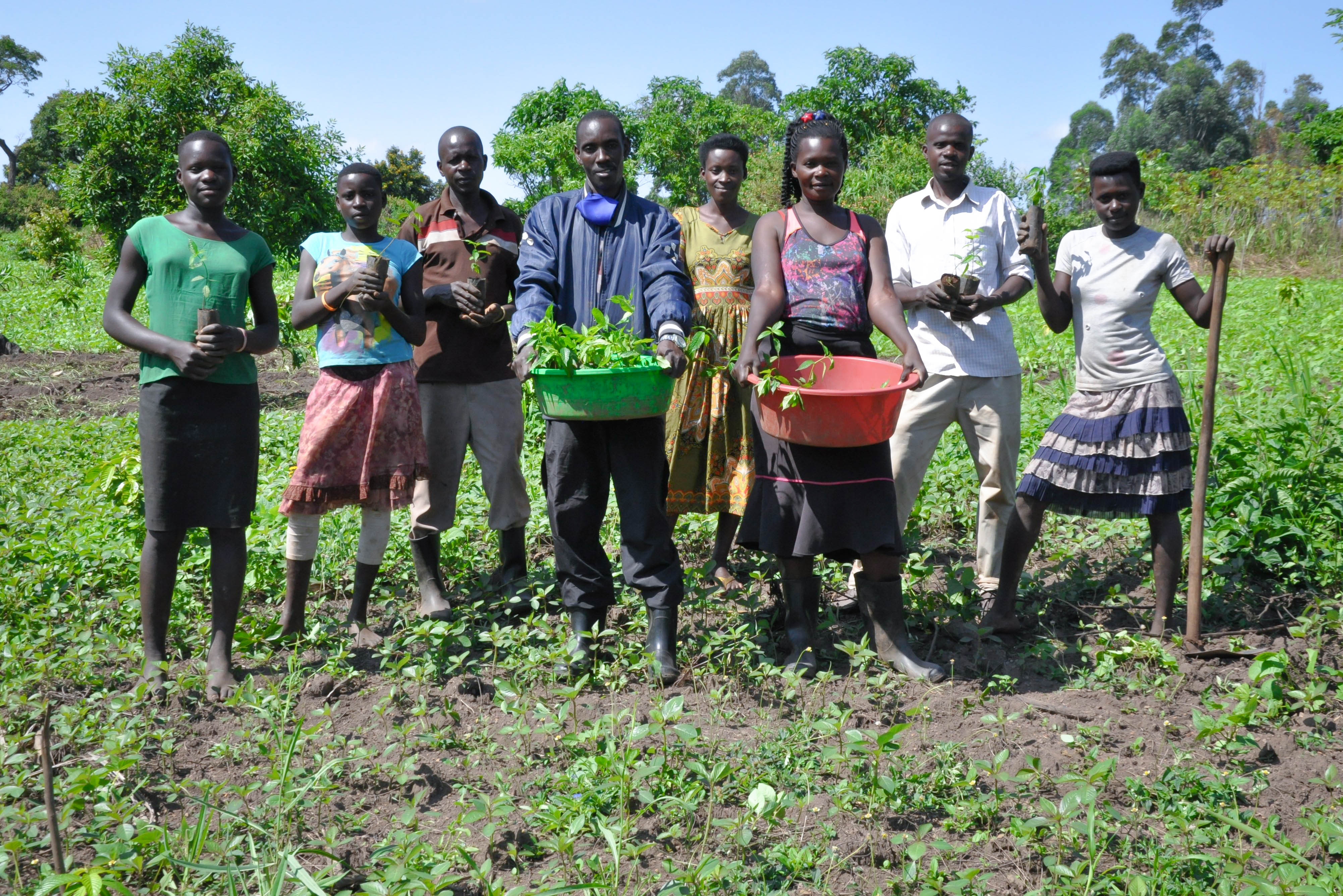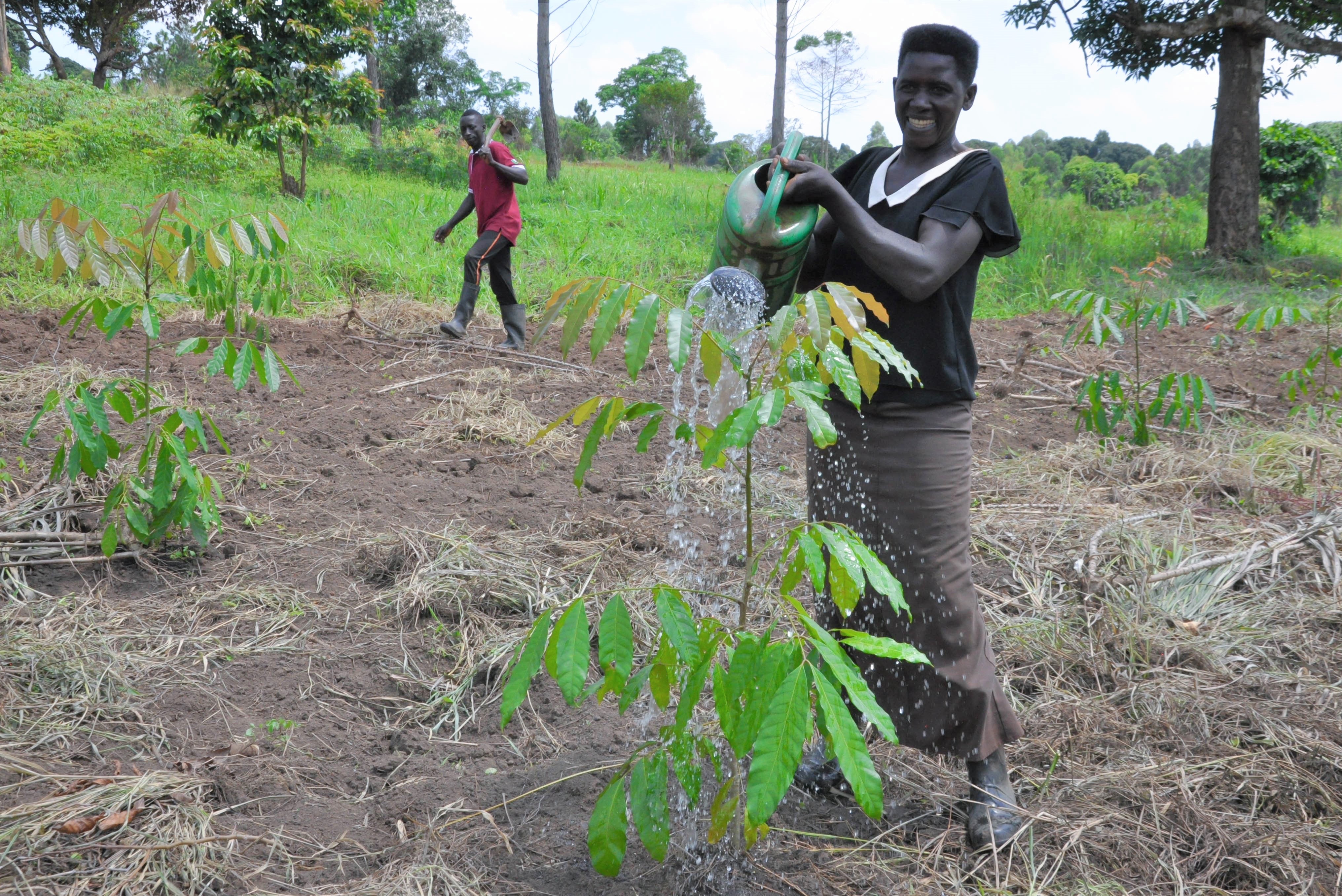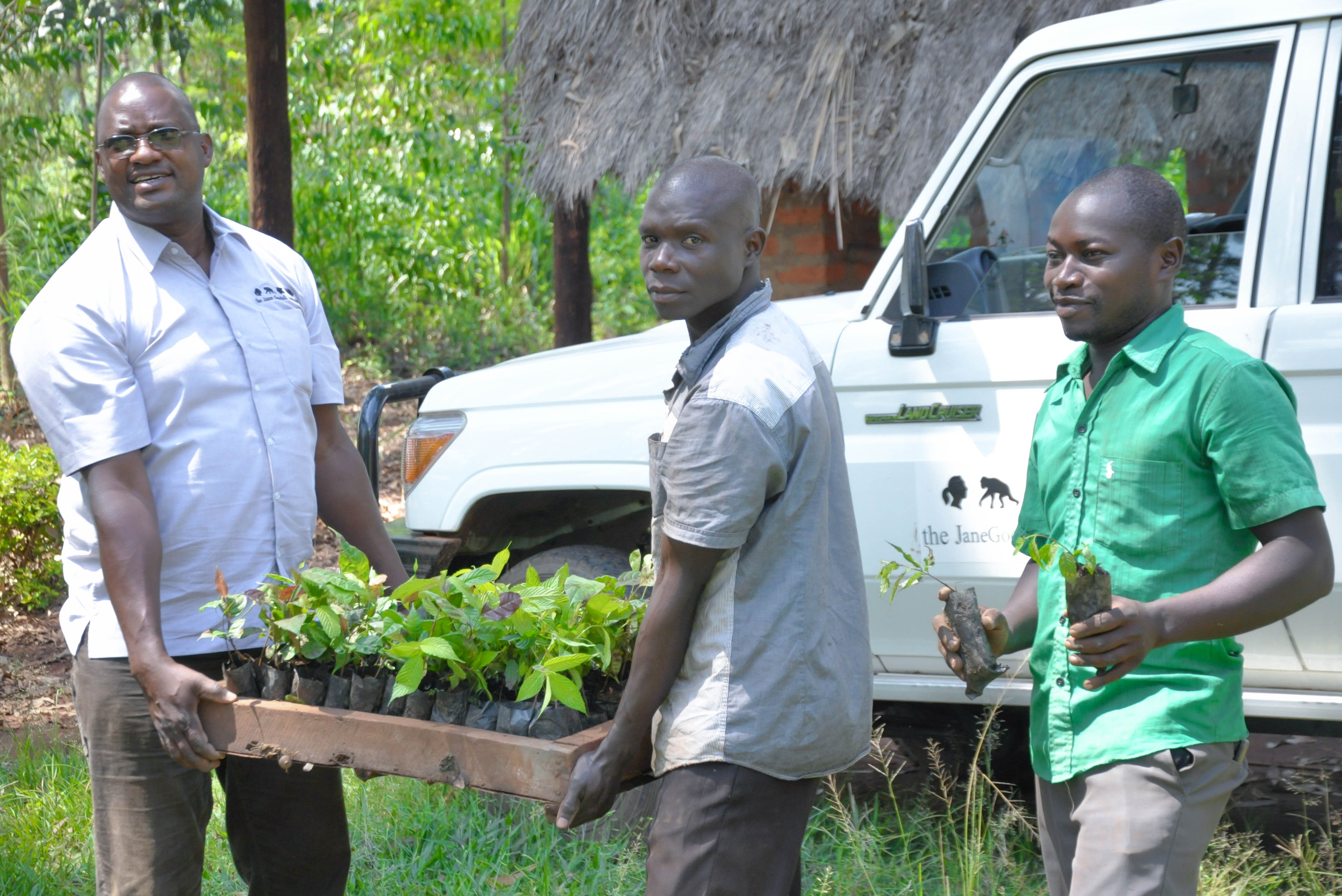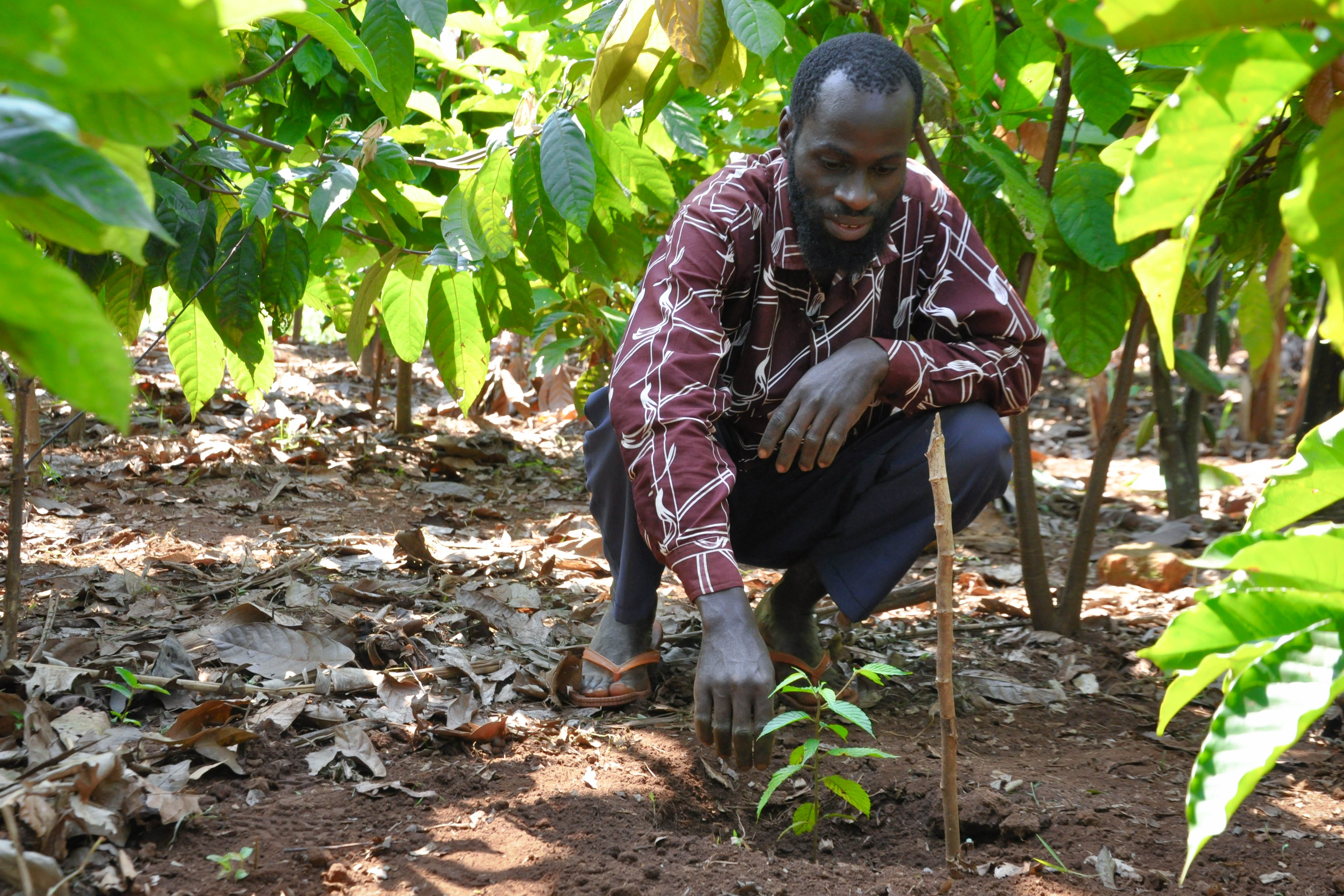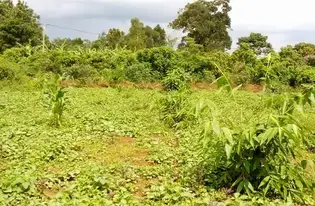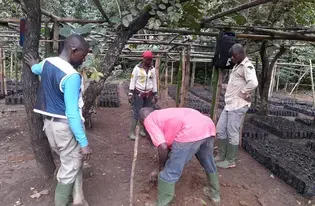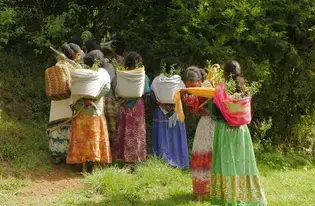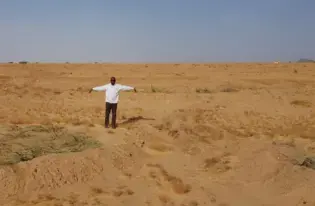East Africa's Albertine Rift landscape is a diverse ecosystem that provides a prominent habitat for many rare plants and animals, like endangered chimpanzees. It houses over 50% of the birds, 39% of the mammals, 19% of the amphibians, and 14% of the reptiles and plants found in mainland Africa. However, these forests face a multitude of threats that contribute to wide-spread degradation. Over the last 25 years, millions of hectares of forest have been lost due to the increasing impact of human settlement, large and small scale agriculture, logging, and fire.
To effectively prortect, improve, and recover the degraded forests of Uganda's section of the Albertine Rift, the Wildlife Habitat Corridor Restoration project led by the Jane Goodall Institute (JGI) in Uganda has followed 4 strategies since 2020: 1) Restore degraded areas in the community forest corridor; 2) Restore degraded areas in Kagombe Central Forest Reserve; 3) Promote agroforestry practices on community land; and 4) Strengthen forest monitoring and law enforcement.
The restoration of these forests is critical. They store carbon, support well-functioning ecosystems that provide critical services like clean water, and maintain a habitat for highly endangered species that relying on Albertine Rift forests for their survival. Reforestation will also support the wellbeing of the local communities.
So far, 170 local community members have been trained in nursery establishment. 200,000 assorted tree seedlings have been planted in 10 parishes within Budongo Bugoma Corridor (BBC), and 130 people have been trained and equipped to conduct forest and ecological monitoring in 16 parishes within the BBC.
JGI has also facilitated the formation of 13 Private Forest Owners’ Associations (PFOAs); supported these forest owners in surveying and registering their land; facilitated the assignment of forest management rights for them; trained them in sustainable management practices; and equipped them with the tools and skills they need to use mobile technologies and near-real-time forest loss alerts derived from satellite imagery to track deforestation over time.
Over the three years, a total of 3 million assorted seedlings of both native (65%) and plantation and agroforestry species (35%) will be planted. 700 households will be trained and supported to apply sustainable agroforestry practices on their land, and each village in the project area will have at least one trained individual working to monitor the forest.
By the end of the project, it is envisioned that forest monitoring data will be stored and used by Uganda's National Forestry Authority.
East Africa's Albertine Rift landscape is a diverse ecosystem that provides a prominent habitat for many rare plants and animals, like endangered chimpanzees. It houses over 50% of the birds, 39% of the mammals, 19% of the amphibians, and 14% of the reptiles and plants found in mainland Africa. However, these forests face a multitude of threats that contribute to wide-spread degradation. Over the last 25 years, millions of hectares of forest have been lost due to the increasing impact of human settlement, large and small scale agriculture, logging, and fire.
To effectively protect, improve, and recover the degraded forests of Uganda's section of the Albertine Rift, the Wildlife Habitat & Corridor Restoration project led by the Jane Goodall Institute (JGI) in Uganda has followed 4 strategies since 2020: 1) Restore degraded areas in the community forest corridor; 2) Restore degraded areas in Kagombe Central Forest Reserve; 3) Promote agroforestry practices on community land; and 4) Strengthen forest monitoring and law enforcement.
The restoration of these forests is critical. They store carbon, support well-functioning ecosystems that provide critical services like clean water, and maintain a habitat for highly endangered species that relying on Albertine Rift forests for their survival. Reforestation will also support the wellbeing of the local communities.
So far, 170 local community members have been trained in nursery establishment. 200,000 assorted tree seedlings have been planted in 10 parishes within Budongo Bugoma Corridor (BBC), and 130 people have been trained and equipped to conduct forest and ecological monitoring in 16 parishes within the BBC.
JGI has also facilitated the formation of 13 Private Forest Owners’ Associations (PFOAs); supported these forest owners in surveying and registering their land; facilitated the assignment of forest management rights for them; trained them in sustainable management practices; and equipped them with the tools and skills they need to use mobile technologies and near-real-time forest loss alerts derived from satellite imagery to track deforestation over time.
Over the three years, a total of 3 million assorted seedlings of both native (65%) and plantation and agroforestry species (35%) will be planted. 700 households will be trained and supported to apply sustainable agroforestry practices on their land, and each village in the project area will have at least one trained individual working to monitor the forest.
By the end of the project, it is envisioned that forest monitoring data will be stored and used by Uganda's National Forestry Authority.
